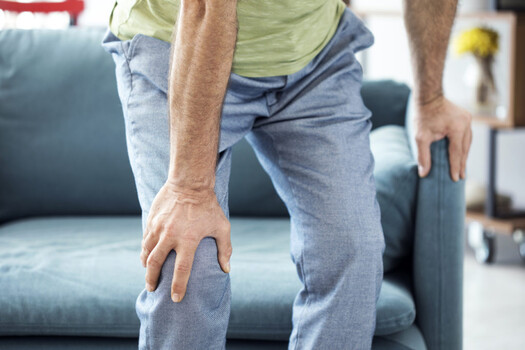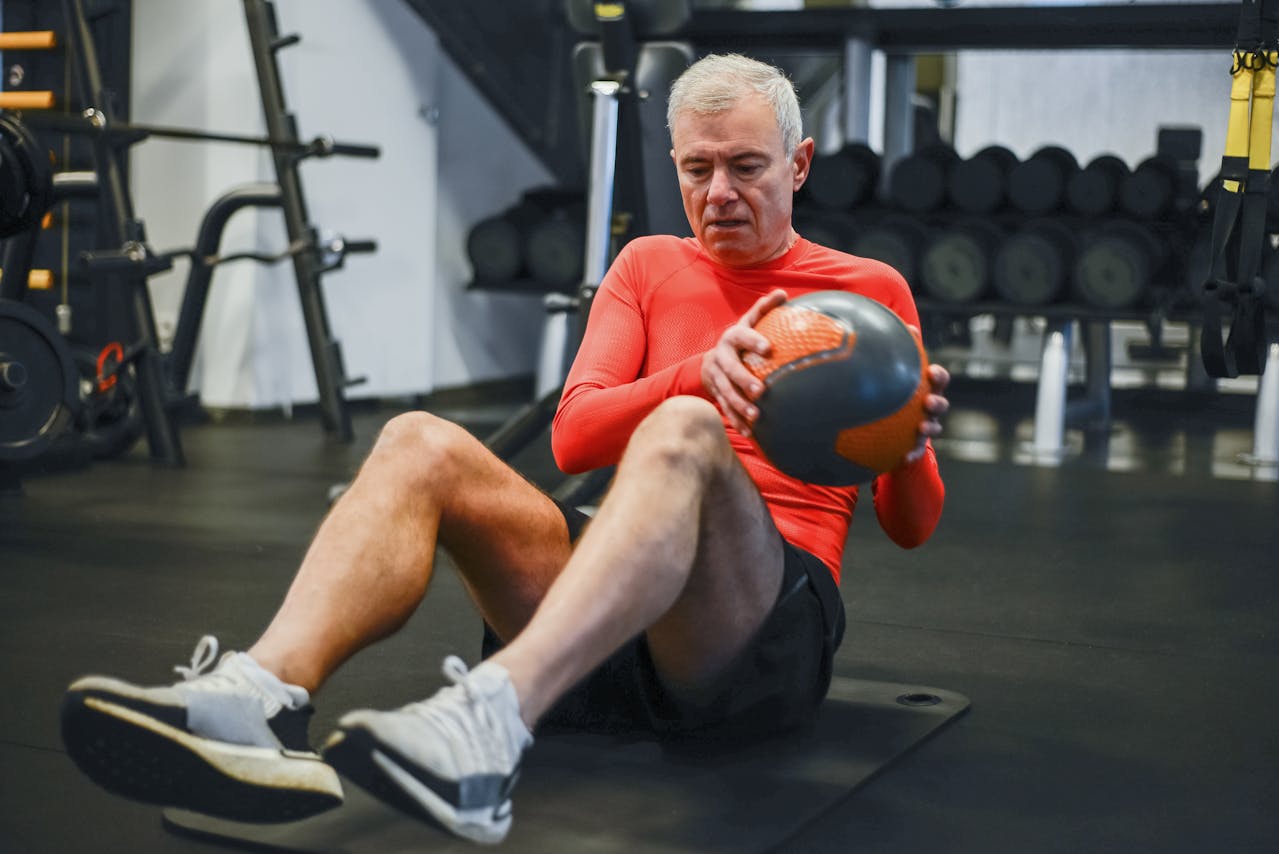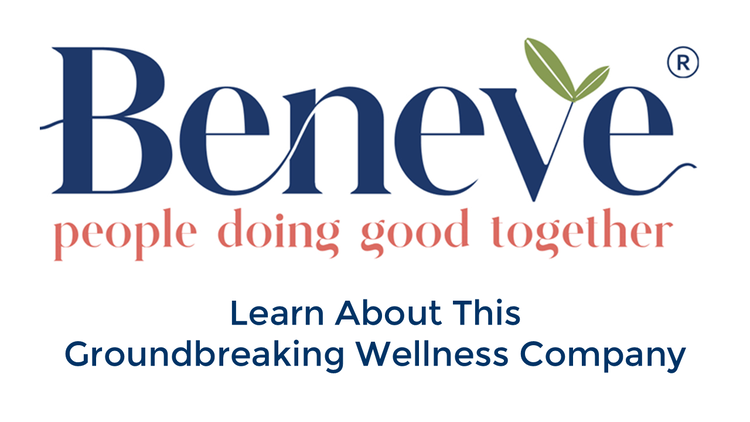As men move through their 50s, 60s, and 70s, joint pain becomes an increasingly common and frustrating part of life. Whether it’s knees, hips, or shoulders, the discomfort can be relentless — limiting movement, reducing vitality, and affecting quality of life. The typical path is familiar: start with over-the-counter meds, maybe move to prescriptions, and when the pain becomes unbearable, undergo surgery — often a knee or hip replacement.
But what if there’s another way? A better way — one that strengthens your body rather than relying on medications or invasive procedures?
I want to offer a different perspective — one rooted in movement, muscle, and resilience. Let's look into exercise with joint pain and arthritis.
The Standard Path: Meds and Surgery
Joint pain is the leading cause of disability in the U.S., and arthritis affects nearly 60 million adults. As we age, the cartilage between joints thins, inflammation increases, and pain sets in. Doctors often prescribe NSAIDs or corticosteroids to manage symptoms, and in severe cases, recommend joint replacement surgery.
In fact, more than 1 million Americans undergo knee or hip replacements each year — and that number is expected to rise sharply as the population ages.

While surgery can help in extreme cases, it’s not without downsides: long recovery times, risks of infection or blood clots, and often, a frustratingly slow return to full mobility. And it doesn’t always address the root issue: muscle weakness and joint instability.
A Better Way: Movement Is Medicine
Instead of treating pain with pills or rushing into surgery, many experts now recommend something surprisingly simple — movement. Specifically, low-impact exercise and strength training designed to stabilize joints and reduce inflammation.
According to Harvard Health, strength training can help reduce joint pain, increase bone density, and improve overall function for people with arthritis. In their words:
"Strengthening the muscles around your joints helps to take the pressure off the joint itself."
The Centers for Disease Control and Prevention (CDC) also strongly promotes physical activity as a first-line treatment for arthritis. In fact, they say:
“Regular physical activity can reduce arthritis pain and improve function, mood, and quality of life.”
The Arthritis Foundation encourages low-impact movement like walking, swimming, cycling, and resistance training to keep joints healthy and mobile. Exercise with joint pain and arthritis can not only help with the specific pain, but it keeps you healthier and increases your healthspan.
My Story: Meniscus Tear and the Choice to Strengthen
A few years ago, while playing pickleball — a sport I love — I tore the meniscus in my left knee. Thankfully, it wasn’t a complete tear, but it was painful and made every day movement feel risky. I visited a doctor who explained that, while surgery was an option, it wasn’t strictly necessary unless things got worse.

I chose a different path. Instead of going under the knife, I worked on strengthening the muscles around my knee — especially my quads, hamstrings, and glutes. I committed to consistent leg workouts, mobility exercises, and a daily walking routine.
It wasn’t an overnight fix, but over time, the pain decreased. My stability improved. I felt stronger, more confident, and less reliant on meds. And the best part? My entire body benefited.
A friend of mine, Peter, had a meniscus tear, and he chose surgery. But while he was waiting for the surgery, he started coming to the gym with me. I showed him what I was doing to strengthen my legs and to support my knee. After his surgery, his physical therapist told him that strengthening his legs was the best thing he could have done to recover from surgery faster. So, even if surgery is ultimately the path that you choose, you should still exercise with joint pain and arthritis.
The Best Types of Exercise with Joint Pain and Arthritis
Not all exercise is created equal, especially when dealing with joint issues. Here are some of the best options recommended by physical therapists and arthritis specialists:
1. Strength Training for Arthritis
Focus on building muscles that support and stabilize painful joints. Start with light resistance bands, bodyweight exercises, or machines. Key moves:
- Leg presses for knees
- Glute bridges and step-ups
- Light dumbbell work for shoulders/elbows
As you build strength and stability, you can advance to:
- Squats
- Lunges without, then with dumbbells
- Up-Downs - On both knees, without holding onto anything, get up using one leg. Come back down and get up using the other leg. Build up until you can do this 10 times on each leg. If you need a chair to assist you to start, do that. But keep working at it until you can get up using either leg unassisted. Here's a YouTube Video short demonstrating the Up-Downs exercise.
If you haven't lifted weights in a while, or ever, you may want to start by getting your body ready. Check out our 30-day starter workout.
2. Low-Impact Cardio
Activities like swimming, cycling, and elliptical training provide cardiovascular benefits without stressing joints.
3. Stretching and Mobility
Yoga or targeted mobility routines improve flexibility and joint function. Just 10 minutes a day can increase your range of motion.
4. Walking
A simple daily walk improves circulation, loosens stiff joints, and strengthens muscles. Start small — even 10–15 minutes per day — and build up as your confidence and stamina grow.
You can build up by adding weight to a backpack. It's called 'rucking'. See, exercise after surgery for older men
When to Seek Professional Help
While self-guided exercise can work wonders, it’s always wise to consult a physical therapist or sports medicine physician — especially after an injury or if pain persists. These professionals can develop a customized plan based on your current condition and help you progress safely.
Look for providers who support movement-based healing and don’t rush to prescribe medications or recommend surgery as the first solution.
Final Thoughts: Reclaiming Strength After 50
If you're in your 50s, 60s, or 70s and struggling with joint pain, don’t assume that surgery or pain meds are your only choices. Your body — even now — has incredible capacity for healing and strengthening.
Yes, you may need to move differently. You’ll need to start slowly. But every walk, every rep, every stretch moves you closer to a body that works with you — not against you.
I’ve lived it myself. Choosing to strengthen instead of surrender has made all the difference in my life. And I believe it can for you, too.
So if you're hurting today, take heart — and take a step. You’re not done yet.
To learn more about our focus and mission, visit My Vitality Reboot.
Beneve makes absolutely no medical claims with regards to our products, or individual ingredients.
Disclaimer: MyVitalityReboot.com does earn a commission from Beneve purchases made through links on this site — at no extra cost to you.
This enables us to continue providing high-quality content on health and vitality for men over 50.

